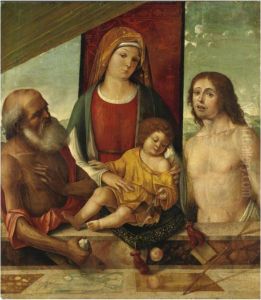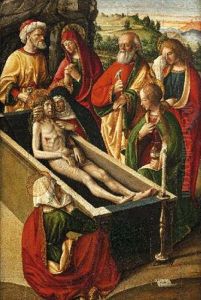Baldassarre Carrari Paintings
Baldassarre Carrari, born in 1460 in Forlì, was an Italian painter and manuscript illuminator active during the Renaissance period. Although not as widely recognized as some of his contemporaries, Carrari's work reflects the transitional artistic sensibilities of his time, bridging the late Gothic and early Renaissance styles. His contributions, primarily in the form of religious art and illuminated manuscripts, are notable for their delicate detail and the incorporation of emerging Renaissance ideals of perspective and humanism.
Carrari's life and career were largely centered in his hometown of Forlì, a city that was a significant cultural hub in Italy during the Renaissance. The artistic environment of Forlì, influenced by the presence of other renowned artists such as Melozzo da Forlì, played a crucial role in shaping Carrari's artistic development. Despite the limited documentation on his life, records indicate that he was deeply involved in the local art community, collaborating with other artists and contributing to the beautification of local churches and civic buildings.
The exact scope of Carrari's oeuvre is difficult to ascertain due to the common practice of not signing works during that era, as well as the potential confusion with other artists with similar names or styles. However, some artworks have been attributed to him with reasonable certainty, showcasing his skill in handling both large-scale frescoes and the intricate details required in manuscript illumination. His work is characterized by graceful figures, a harmonious use of color, and an emerging grasp of the importance of light and shadow, which would come to define the Renaissance style.
Carrari's death in 1516 marked the end of a career that, while not as celebrated as that of some of his peers, contributed to the rich tapestry of Renaissance art in Italy. His legacy, preserved in the few works attributed to him, reflects the broader artistic movements of his time and offers valuable insights into the transitional period between the medieval and Renaissance eras. Through his art, Baldassarre Carrari remains a testament to the depth and diversity of talent that flourished throughout Italy during one of its most vibrant cultural epochs.

